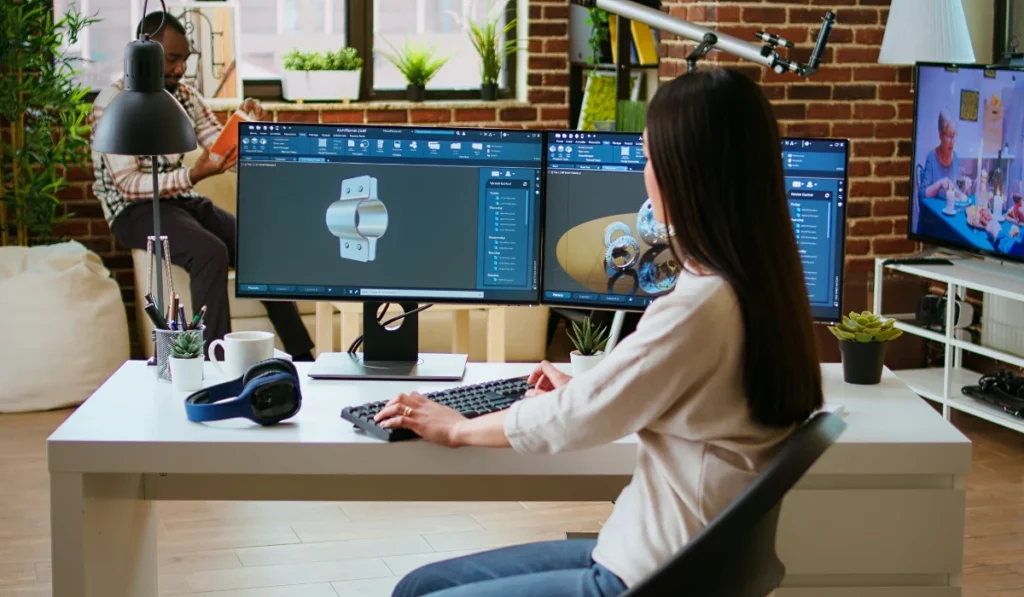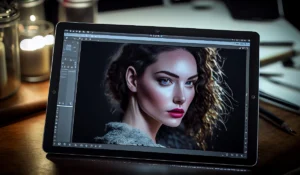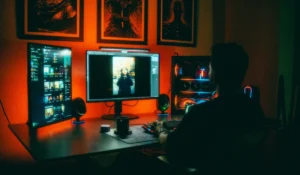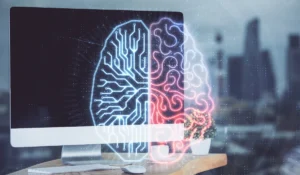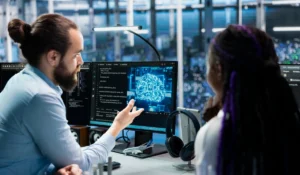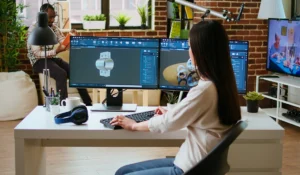Artificial Intelligence (AI) has transformed nearly every creative industry, and 3D modeling is no exception. AI for 3D modeling leverages machine learning algorithms to automate complex design tasks, optimize workflows, and enhance visualization capabilities. Traditionally, artists and engineers manually sculpt, texture, and render objects a process that often takes weeks. However, AI-driven tools now generate realistic models, textures, and environments within hours or even minutes.
Moreover, the integration of AI in 3D modeling not only boosts efficiency but also enhances creativity. By analyzing vast datasets of images, patterns, and geometries, AI systems learn to predict shapes, simulate lighting, and suggest design improvements. Consequently, designers can experiment freely without worrying about technical constraints. In industries like architecture, gaming, and product design, AI modeling solutions are enabling professionals to produce accurate and detailed visuals faster than ever before.
Additionally, AI-based modeling platforms are democratizing 3D design. Beginners can now use intuitive interfaces where the AI assists in creating complex structures from simple sketches or text prompts. As a result, AI for 3D modeling bridges the gap between artistic vision and technical execution, making high-end design accessible to everyone.
How Artificial Intelligence Enhances 3D Design Workflows

The evolution of 3D design software powered by AI has fundamentally changed how professionals work. Traditional modeling requires extensive knowledge of geometry, materials, and lighting. With AI, many of these steps are automated, allowing artists to focus on creativity rather than repetitive tasks.
AI algorithms can analyze the designer’s intent and automatically generate optimized meshes, apply realistic textures, and even simulate physical behavior. Therefore, these innovations streamline the creative process and drastically reduce production time. Additionally, AI-based render engines can adjust lighting, shadows, and materials in real time, producing photorealistic results without extensive manual tuning.
From procedural generation in gaming to architectural visualization and industrial prototyping, AI enhances both quality and speed. Whether you’re an experienced modeler or a newcomer, incorporating AI for 3D modeling can improve efficiency and unlock limitless creative potential.
Key Benefits of AI in 3D Modeling
AI in 3D modeling provides a range of advantages that impact productivity, creativity, and cost-efficiency.
- Automation of Repetitive Tasks: AI can handle time-consuming modeling steps, like UV unwrapping, rigging, and rendering.
- Improved Accuracy: AI algorithms detect and correct geometry errors, ensuring smoother surfaces and better topology.
- Real-Time Rendering: Machine learning optimizes rendering times, producing near-instant visual feedback.
- Data-Driven Insights: AI tools analyze past projects to recommend efficient design patterns and workflows.
- Creative Freedom: Artists can experiment with ideas while AI manages the technical aspects of modeling.
Ultimately, these benefits demonstrate how AI for 3D modeling enhances productivity without sacrificing artistic integrity.
Top AI Tools for 3D Design and Rendering
The rise of AI has introduced a new generation of tools tailored for 3D modeling and design. Each platform offers unique capabilities to suit specific industries and skill levels.
- NVIDIA Omniverse: Enables real-time collaboration and simulation with AI-driven scene rendering.
- Autodesk Fusion 360: Integrates AI features for generative design, automatically creating multiple model variations.
- Blender with AI Add-ons: Open-source software enhanced by machine learning plugins for texture and shape generation.
- Runway ML: Provides accessible AI tools that turn text prompts into 3D shapes and animations.
- Kaedim: Converts 2D images into 3D assets instantly, saving designers hours of manual work.
Consequently, these tools are transforming how professionals conceptualize and execute 3D projects.
AI-Powered Generative Design

Generative design, driven by AI, represents a significant advancement in 3D modeling. Unlike traditional modeling where designers manually adjust every parameter, generative design allows AI to create countless variations based on defined goals. For instance, if an engineer needs a lightweight yet durable component, AI algorithms can generate dozens of optimal structures using simulation and predictive modelling.
Moreover, this technology is especially valuable in manufacturing, architecture, and automotive industries. It enables the creation of designs that would be impossible for humans to conceive alone. As a result, by merging data analysis, simulation, and creativity, AI for 3D modelling pushes the boundaries of what’s achievable in modern design.
How AI Improves 3D Rendering Quality
Rendering, the process of generating photorealistic images from 3D models, traditionally demands high computational power and time. However, AI has revolutionized this step through intelligent denoising, upscaling, and light simulation algorithms. Tools like NVIDIA’s DLSS and AI-based ray tracing significantly improve visual fidelity while reducing render times.
Additionally, AI can predict lighting behaviors and texture details, producing lifelike results even on lower-end hardware. Therefore, for studios and freelancers alike, these advancements mean faster delivery and lower costs without compromising on visual excellence.
Applications of AI in 3D Modeling Industries
AI’s impact on 3D modeling extends across multiple industries, each benefiting in unique ways.
- Architecture: AI assists in generating building layouts, optimizing space usage, and creating realistic visualizations.
- Gaming: Game developers use AI to generate 3D assets, landscapes, and character models, accelerating production cycles.
- Film and Animation: Visual effects studios rely on AI-driven simulations for crowd scenes, textures, and motion capture cleanup.
- Healthcare: AI supports the creation of anatomical 3D models used in medical training and prosthetic design.
- Manufacturing: Engineers use AI-based 3D modeling to prototype and test designs before physical production.
Hence, these real-world applications highlight how AI for 3D modeling is shaping industries with smarter, faster, and more accurate workflows.
Future of AI in 3D Modeling

The future of AI in 3D modeling looks exceptionally promising. As algorithms grow more sophisticated, AI will not only assist but also collaborate creatively with humans. We can expect intuitive voice or gesture-based modeling, predictive design systems, and fully automated world-building in the near future.
Furthermore, AI will make 3D creation more inclusive. Even those without traditional design training will be able to produce professional-quality models through natural language input. Consequently, this democratization of 3D modeling will accelerate innovation across entertainment, education, and virtual reality sectors.
- Smarter Collaboration: AI will enhance real-time teamwork through predictive tools.
- Improved Accessibility: Non-designers will create complex models using simple text commands.
- Sustainability: AI-optimized designs will reduce material waste and improve energy efficiency.
- Immersive Integration: AI-generated assets will play a major role in metaverse and AR/VR environments.
Ultimately, the synergy of AI and human creativity will redefine digital design in unimaginable ways.
Challenges of Implementing AI in 3D Design
While the advantages of AI for 3D modeling are significant, challenges still exist. Integrating AI tools into existing pipelines can be complex, and ensuring consistent quality requires careful supervision. Designers must also adapt to new technologies, which may initially slow productivity. To explore a range of powerful solutions that can streamline this process, check out these AI tools to design that are transforming how designers work.
- Data Dependency: AI performance relies on the quality and diversity of training data.
- Ethical Considerations: Automated generation raises questions about originality and intellectual property.
- Learning Curve: Professionals need time to adjust to AI-assisted workflows.
- Cost of Implementation: High-end AI systems can be expensive for small studios.
Nevertheless, addressing these challenges will be essential for maximizing the full potential of AI in 3D modeling.
FAQs
1. Can AI create complete 3D models automatically?
Yes. AI tools like Kaedim and Runway ML can generate 3D assets from sketches or 2D images.
2. Do AI models replace human designers?
No. AI enhances creativity and productivity but still relies on human input for artistic direction.
3. Is AI-based 3D modeling expensive?
While initial costs may be high, automation and time savings make it cost-effective long-term.
4. What industries benefit most from AI modeling?
Architecture, gaming, film, and manufacturing see the greatest impact from AI integration.
Conclusion
AI for 3D modeling marks a revolutionary leap in how digital worlds are designed. Firstly, it streamlines workflows and moreover enhances visual realism. Additionally, AI allows creators to work faster, smarter, and more creatively. Consequently, designers gain freedom to focus on innovation instead of technical details.
Furthermore, as technology evolves, the influence of AI will grow even stronger. In fact, intelligent modelling tools are becoming increasingly intuitive and accessible. Meanwhile, industries such as gaming, architecture, and animation are already reaping the benefits. As a result, projects are completed faster and with higher precision, enabling professionals to focus more on creativity and innovation.
In addition, AI encourages collaboration and, for example, simplifies communication between teams. Therefore, embracing AI now ensures long-term creative advantage. Ultimately, it blends human imagination with machine intelligence. To explore the best tools that can enhance your workflow, check out our guide on AI tools for designers. In conclusion, adopting AI today means shaping a brighter, more dynamic future for digital design.

